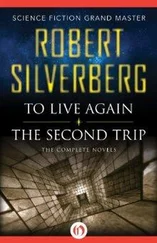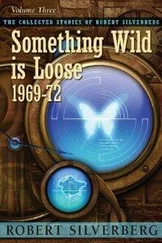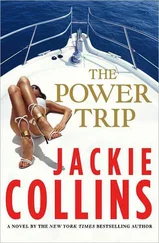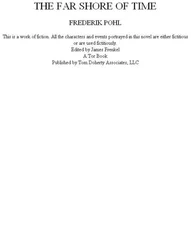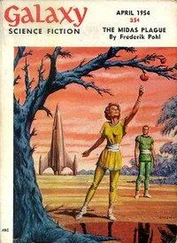Pohl, Frederik - The Gateway Trip
Здесь есть возможность читать онлайн «Pohl, Frederik - The Gateway Trip» весь текст электронной книги совершенно бесплатно (целиком полную версию без сокращений). В некоторых случаях можно слушать аудио, скачать через торрент в формате fb2 и присутствует краткое содержание. Жанр: Старинная литература, на английском языке. Описание произведения, (предисловие) а так же отзывы посетителей доступны на портале библиотеки ЛибКат.
- Название:The Gateway Trip
- Автор:
- Жанр:
- Год:неизвестен
- ISBN:нет данных
- Рейтинг книги:4 / 5. Голосов: 1
-
Избранное:Добавить в избранное
- Отзывы:
-
Ваша оценка:
- 80
- 1
- 2
- 3
- 4
- 5
The Gateway Trip: краткое содержание, описание и аннотация
Предлагаем к чтению аннотацию, описание, краткое содержание или предисловие (зависит от того, что написал сам автор книги «The Gateway Trip»). Если вы не нашли необходимую информацию о книге — напишите в комментариях, мы постараемся отыскать её.
The Gateway Trip — читать онлайн бесплатно полную книгу (весь текст) целиком
Ниже представлен текст книги, разбитый по страницам. Система сохранения места последней прочитанной страницы, позволяет с удобством читать онлайн бесплатно книгу «The Gateway Trip», без необходимости каждый раз заново искать на чём Вы остановились. Поставьте закладку, и сможете в любой момент перейти на страницу, на которой закончили чтение.
Интервал:
Закладка:
The celebration was a bit premature. It had not occurred to them that one interesting color was missing in their view of New Earth from space, and that color was green.
When Sherba Mirsky and Leonie Tilden went down to the surface of New Earth in the lander, what they landed on was bare rock. Nothing grew there. Nothing moved. Nothing flew in the sky. There were no flowering plants. There were no plants at all, at their elevation; there wasn't any soil for them to grow in. Soil hadn't reached those parts of the world yet.
It was only one more disappointment to find that there wasn't much oxygen in its air, either-enough for a qualitative determination from orbit, yes, but nowhere near enough to breathe. For, although there certainly was life on New Earth, there just wasn't much of it yet. Most of what there was lived in the coastal shallows, with a few hardy adventurers just making a start in colonizing the shores-simple prokaryotic and eukaryotic denizens of the sludgy seas, with a few scraggly, mossy things that had struggled out onto the littoral.
The trouble with New Earth was that it was a lot too new. It would take a billion years or so to get really interesting-or to pay Tilden, the Mirskys, and the Gateway Corporation back for the trouble of looking it over.
Although it was planets that offered profits, planets were also the places where it was easiest to get killed. As long as a Gateway prospector stayed inside his ship he was well protected against most of the dangers of star wandering. It was when he landed that he exposed himself to unknown environments ... and often very hostile ones.
For example, there was-MISSION PRETTY POISON
A fifty-year-old Venezuelan named Juan Mendoza Santamaria was the first Gateway prospector to discover a really nice-looking planet. It had taken him forty-three days to get there, all alone in a One. That was well within his margins. He was not likely to run out of air, food, or water. What he worried about running out of was money. Mendoza had spent the last of his credits on a farewell party before he left the asteroid. If he came back empty-handed to Gateway his future was bleak. So he crossed himself and whispered a prayer of gratitude as he stepped out of his lander onto the alien soil.
He was grateful, but he wasn't stupid. Therefore he was also cautious. Mendoza knew very well that if anything went wrong he
was in serious trouble. There was no one within many light-years who could help him-in fact, there wasn't anybody, anywhere, who even knew where he was. So he wore his space suit at all times on the surface of the planet, and that turned out to be very fortunate for Juan Mendoza.
The planet didn't look threatening at all. The plants were an odd shade of orange, the distant trees (or were they simply very tall grasses?) looked harmless, and there were no obviously threatening large animals. On the other hand, there wasn't much to be seen that looked immediately profitable, either. There weren't any signs of civilization-no great abandoned cities, no friendly alien intelligences to welcome him, no Heechee artifacts lying about waiting to be picked up. There wasn't even any kind of metallic structure, natural or otherwise, on the surface large enough to be detected by his lander's sensors as he came down. But, Mendoza reassured himself, the fact that there was any kind of life ought to be worth at least a science bonus. He identified both "plant" and "animal" life-
at least some of the things moved, and some of them were firmly rooted in the soil.
He took some samples of the plants, though they weren't impressive. He trekked painfully over to the "trees" and found that they were soft-bodied, like mushrooms. There weren't any large ferns or true grasses; but there was a kind of fuzzy moss that covered most of the soil, and there were things that moved on it. None of the moving things were very big. The largest life form Mendoza encountered was an "arthropod" about the size of his palm. The little beasts moved about in little herds, feeding on smaller beetly and buggy things, and they were covered with a dense "fur" of glassy white spicules, which made them look like herds of tiny sheep. Mendoza felt almost guilty as he trapped a few of the pretty little creatures, killed them, and put them, with samples of the smaller creatures they preyed on, in the sterile containers that would go back to Gateway.
There wasn't anything else worth transporting. What the planet had that was really worthwhile was beauty. It had a lot of that.
It was quite near-Mendoza estimated thirty or forty light-years-a bright, active gas cloud that he thought might be the Orion Nebula. (It wasn't, but like the one in Orion it was a nursery for bright young stars.) Mendoza happened to land in the right season of the year to appreciate it best, for as the planet's sun set on one horizon the nebula rose on the other. It came to fill the entire night sky, like a luminous, sea-green tapestry laced with diamonds, edged in glowing royal maroon. The "diamonds"-the brightest stars within the nebula-were orders of magnitude brighter even than Venus or Jupiter as seen from Earth, nearly as bright as Earth's full Moon. But they were point sources, not disks like the Moon, and they were almost painful to look upon.
It was the beauty that struck Mendoza. He was not an articulate man. When he got back and filed his report he referred to the planet as "a pretty place," and so it was logged in the Gateway atlases as "Pretty Place."
Mendoza got what he was after: a two-million-dollar science bonus for finding the planet at all, and the promise of a royalty share on whatever subsequent missions might discover on Pretty Place. That could have turned out to be really serious money. According to Gateway rules, if the planet was colonizable Mendoza would be collecting money from it for the rest of his life.
Almost at once two other missions, both Fives, copied his settings and made the same trip.
That was when they changed the name to Pretty Poison.
The follow-up parties were not as cautious as Mendoza. They didn't keep their space suits on. They didn't have the natural protections that had been developed by Pretty Poison's own fauna, either. The local life had evolved to meet a real challenge; those furry silicon spikes were not for ornament. They were armor.
It was a pity Mendoza hadn't completed his radiation checks, because those bright young stars in the nebula were not radiating visible light alone. They were powerful sources of ionizing radiation and hard ultraviolets. Four of the ten explorers came down with critical sunburn before they began to show signs of something worse. All of them, by the time they got back to Gateway, required total blood replacement, and two of them died anyway.
It was a good thing that Mendoza was a prudent man. He hadn't spent his two million in wild carouse, expecting the vast royalties that might come as his percentage of all that colonizing his planet would bring about. The planet could not be inhabited by human beings. The royalties never came.
MISSION BURNOUT
Of the nearly thousand Heechee vessels found on Gateway, only a few dozen were armored, and most of those were Fives. An armored Three was a rarity, and when the crew of Felicia Monsanto, Greg Running Wolf, and Daniel Pursy set out in one they knew
there was a certain element of danger; its course setting might take them to some really nasty place.
But when they came out of FTL and looked around they had a moment of total rapture. The star they were near was quite sunlike, a G-2 the same size as Earth's Sol; they were orbiting a planet within the livable zone from the star, and their detectors showed Heechee metal in large quantities!
The biggest concentration was not on the planet. It was an asteroid in an out-of-ecliptic orbit-a lot like Gateway-and it had to be another of those abandoned parking garages for Heechee ships! When they approached it they saw that the guess was correct
Читать дальшеИнтервал:
Закладка:
Похожие книги на «The Gateway Trip»
Представляем Вашему вниманию похожие книги на «The Gateway Trip» списком для выбора. Мы отобрали схожую по названию и смыслу литературу в надежде предоставить читателям больше вариантов отыскать новые, интересные, ещё непрочитанные произведения.
Обсуждение, отзывы о книге «The Gateway Trip» и просто собственные мнения читателей. Оставьте ваши комментарии, напишите, что Вы думаете о произведении, его смысле или главных героях. Укажите что конкретно понравилось, а что нет, и почему Вы так считаете.

